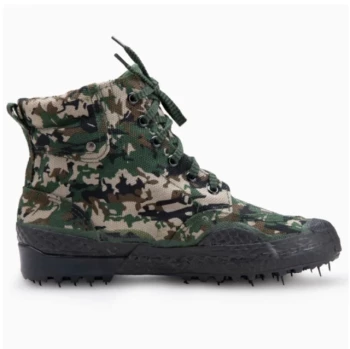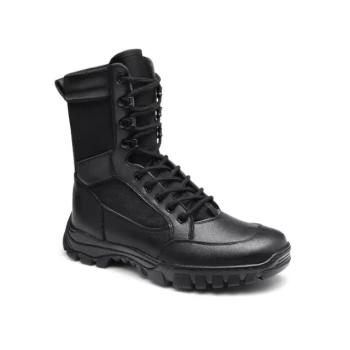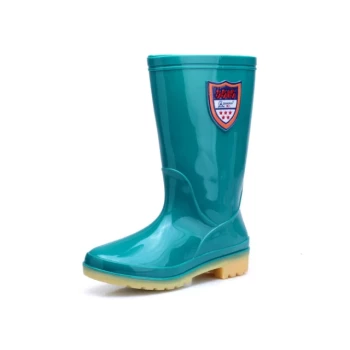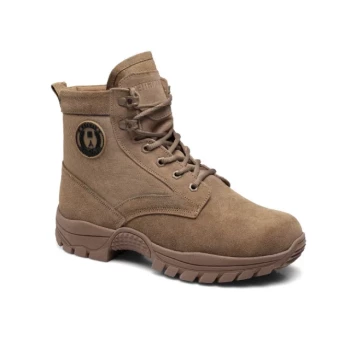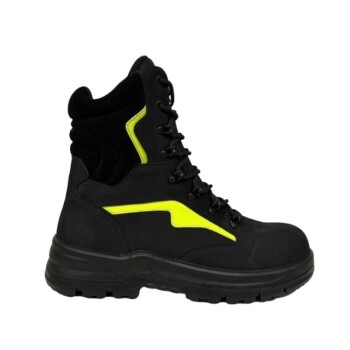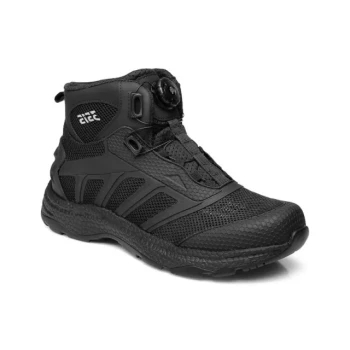For walking in snake-prone wooded areas, the most reliable protection comes from a two-part system: sturdy, over-the-ankle hiking or leather boots combined with dedicated snake gaiters. While a thick boot provides a crucial first layer of defense, gaiters extend this protection up to your knee, covering the most common strike zone for venomous snakes in North America.
The core principle of snake safety is not finding a single "snake-proof" product, but creating a system of protection. This system combines impenetrable gear for your lower legs with the critical practice of environmental awareness.

Deconstructing an Effective Protection System
True safety in snake country is built in layers. Thinking of your protection as an integrated system, rather than just a pair of boots, is the key to minimizing risk.
The Foundation: Sturdy, Over-the-Ankle Boots
Your boots are the starting point. They must be made of a thick, durable material that resists punctures from fangs, thorns, and sharp rocks.
Look for either full-grain leather work boots or sturdy synthetic hiking boots. The key is a robust construction and a height that fully covers your ankle, providing both support and a baseline of protection.
The Critical Upgrade: Snake Gaiters
This is the most important component for serious protection. Snake gaiters are separate leg armor that you wear over your pants and boots.
They are specifically designed and tested to stop snake fangs and typically provide coverage from the top of your boot to just below your knee. Since the vast majority of snakebites occur on the lower leg, gaiters are considered essential by professionals who work in these environments.
The Final Layer: Appropriate Clothing
Your pants add another layer of defense. Wear long, loose-fitting pants made of a durable fabric like heavy denim or canvas.
A snake striking through loose fabric may expend some of its venom on the cloth before reaching your skin, and the space between the fabric and your leg can help reduce the penetration depth of a fang.
Understanding the Trade-offs and Common Misconceptions
Choosing the right gear involves understanding what it can and cannot do. Blindly trusting a label can create a false sense of security.
"Snake-Proof" Boots vs. Puncture Resistance
Be wary of boots simply marketed as "snake boots." While many are built with reinforced materials, their effectiveness can vary. Most standard leather or hiking boots are puncture-resistant, but not guaranteed to be puncture-proof against a direct, powerful strike from a large snake.
This is why experts overwhelmingly recommend pairing any boot with a separate, dedicated snake gaiter for reliable protection.
The Myth of Steel Toes for Snake Protection
A steel toe is designed to protect your foot from crushing or impact injuries from above. It offers no specific protection from a snakebite, which is a puncture that can occur on any part of the foot or ankle. Do not mistake a steel toe for a feature that enhances snake safety.
Comfort vs. Maximum Security
Thick leather boots and heavy-duty gaiters can be hot, stiff, and cumbersome. This can lead to fatigue on long walks.
It is crucial to find a balance that you will actually wear. Modern gaiters made from materials like Cordura offer excellent protection while being lighter and more flexible than older designs. Always prioritize a good fit in both your boots and gaiters.
Beyond Gear: Proactive Safety Measures
The most effective tool you have is your own awareness. Relying solely on gear without adjusting your behavior is a critical mistake.
Practice Spatial Awareness
The single most important habit is to watch where you step and place your hands. Never step over a log or rock when you cannot see the other side; step on top of it first, then step down.
Use a Tool to Probe Ahead
A walking stick or trekking pole is an invaluable tool. Use it to tap the ground ahead of you and rustle bushes before you walk through them. This can alert a snake to your presence, giving it a chance to move away.
Avoid Blind Spots
Snakes are ambush predators that seek cover. Be extremely cautious when reaching into rock crevices, under shrubs, into log piles, or any other area where you cannot clearly see.
Use Your Senses
Pay attention to your surroundings. Listen for the distinct sound of a rattlesnake's rattle or the hiss of another snake. If you hear one, stop immediately, locate the source, and slowly back away.
Making the Right Choice for Your Goal
Your specific activity and the environment's risk level should dictate your level of protection.
- If your primary focus is occasional hiking on clear trails: Sturdy, over-the-ankle leather or synthetic boots paired with vigilant awareness is a reasonable baseline.
- If your primary focus is moving through dense brush, hunting, or working in known snake habitats: The combination of high-ankle boots and dedicated snake gaiters is the non-negotiable standard for safety.
- If your primary focus is maximum peace of mind in any wooded environment: Always use high-quality snake gaiters over your boots and make proactive awareness a constant habit.
Ultimately, confident and safe travel in the woods comes from combining the right protective gear with smart, defensive behavior.
Summary Table:
| Protection Layer | Key Features | Why It Matters |
|---|---|---|
| Foundation: Over-the-Ankle Boots | Thick leather or sturdy synthetic construction | Provides baseline puncture resistance and ankle support. |
| Critical Upgrade: Snake Gaiters | Dedicated leg armor, tested to stop fangs | Essential protection for the lower leg, the most common strike zone. |
| Final Layer: Clothing | Long, loose-fitting pants (e.g., denim, canvas) | Adds a buffer layer that can reduce venom penetration. |
Gear Up with Confidence for Your Next Outdoor Adventure
As a large-scale manufacturer, 3515 produces a comprehensive range of durable footwear for distributors, brand owners, and bulk clients. Our production capabilities encompass all types of safety and outdoor boots, including the sturdy, over-the-ankle designs recommended for challenging environments.
Let us help you equip your customers or team with reliable footwear.
Contact us today to discuss your specific needs and discover how our manufacturing expertise can provide the durable foundation for your safety gear system.
Visual Guide
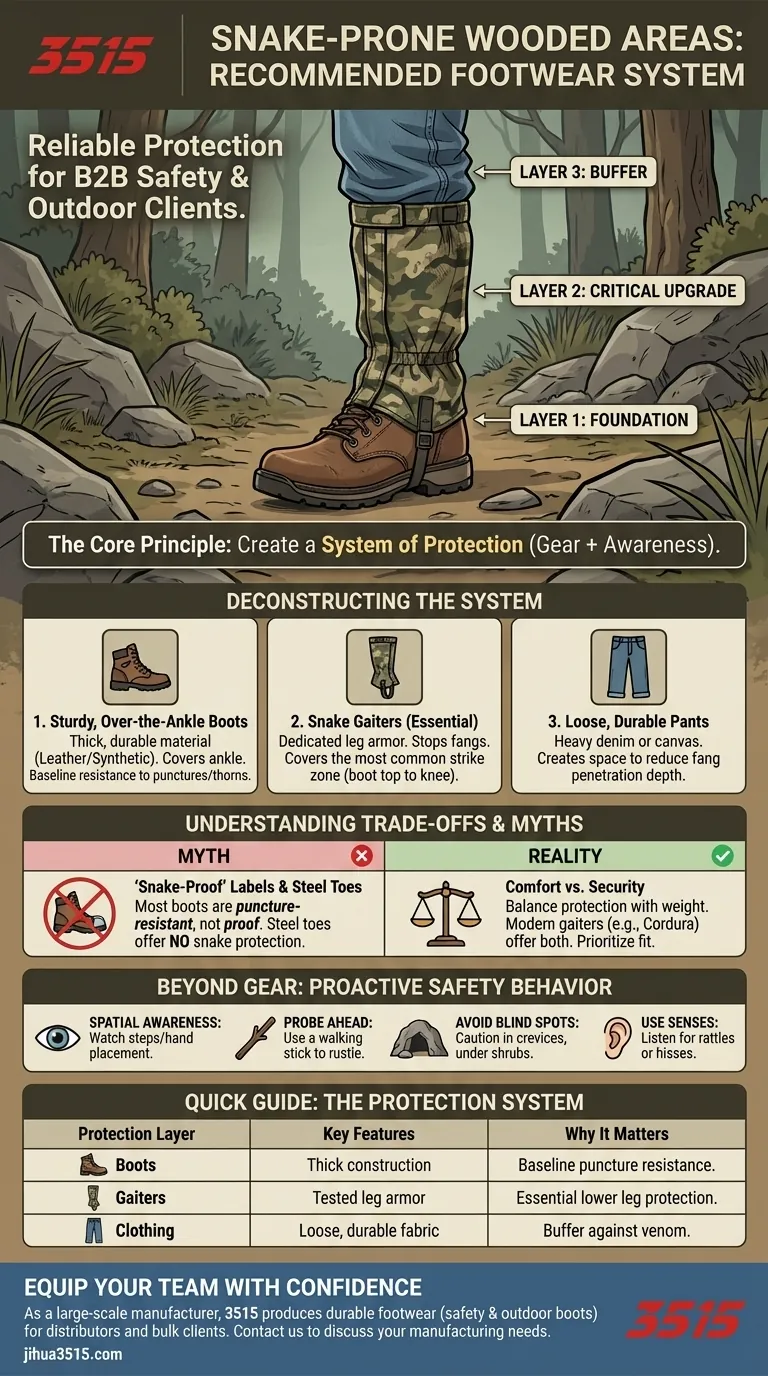
Related Products
- Wholesale Slip-On Safety Boots Manufacturer - Custom Puncture-Proof & Steel Toe
- Custom Wholesale Leather Safety Boots Direct Factory Manufacturing
- Premium Wholesale Wheat Nubuck Safety Boot with Rapid Lacing System
- Customizable Anti-Smash Safety Boots for Wholesale & Private Label Manufacturing
- Premium Grain Leather Safety Boots for Bulk Supply
People Also Ask
- What are the differences between steel toe, composite toe, and alloy toe Wellington boots? Choose the Right Safety Toe for Your Job
- Why is puncture resistance required on job sites? Essential Protection Against Sharp Hazards
- What protection does puncture-resistant (PR) footwear provide? A Shield Against Hidden Hazards
- Are safety shoes worth it? The Critical Investment in Workplace Safety & Foot Health
- Why is the last important in work boot design? It's the Anatomical Blueprint for Comfort & Safety






